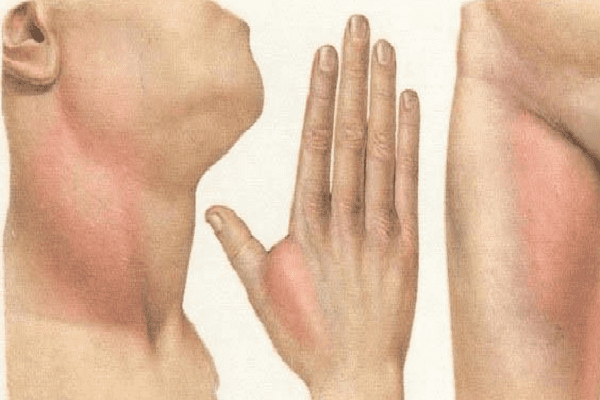Surgery diseases >>>> What is phlegmon?
What is phlegmon?

Phlegmon is called an acute diffuse purulent - inflammatory process that develops in adipose tissue. Unlike an abscess, with phlegmon, inflammation does not have clearly defined boundaries and is not shielded by a capsule from adjacent healthy tissues, and this makes it possible for the infection to spread to the tissues adjacent to the focus of inflammation. Due to the fact that adipose tissue is widespread almost everywhere, and is in contact with many structures, organs and organ systems, the developing inflammation can spread to neighboring tissues and cause damage to various areas of the body.

At the location and lesion of tissues, phlegmon can be: subcutaneous, axillary, subfascial, retroperitoneal. Depending on which organs are subjected to purulent inflammation, there are phlegmon of the foot, hand, perineal, rectal phlegmon, lymph node phlegmon and others.
The most common causes of phlegmon are:
- facultative anaerobic pathogens (clostridia, bacteroids, peptostreptococci, fusobacteria, peptococci) and obligatory anaerobic pathogens (streptococci, staphylococci) having the ability to multiply without oxygen;
- Poorly treated or untreated abscess or carbuncle (a breakthrough of purulent contents is possible not outside, but into the thickness of the tissues);
- Penetration of pathogenic microflora by lymphogenous or hematogenous (through the blood) through other foci of infection;
- Infection of tissues as a result of injuries, accompanied by the destruction of mucous membranes or skin (rupture, puncture, abrasion, bite, burn, hole after injection, ulcer, squeezed pimple);
- Reduced immunity, when the body weakly resists the activity of pathogens (including immunodeficiency states);
- Chronic infections that deplete the body's defenses.
With phlegmon, inflammation develops in the deep layers of the skin (dermis, subcutaneous fatty tissue) and does not have an outlet to the surface of the epidermis, as, for example, when a boil occurs, therefore the external manifestations of phlegmon are similar to other purulent - inflammatory formations only in that at the place of occurrence phlegmon skin is hyperemic (reddish - pink), edematous, accompanied by painful sensations. Typical signs of phlegmon: softening of the inflamed areas and the presence of fluctuations (fluctuations when pressed).
Often, phlegmon is accompanied by an increase in regional lymph nodes, fever, headache, general disorder, and a feeling of thirst. With deeply located phlegmons, external signs of inflammation (hyperemia, edema, swelling) may not be observed, but pain, fever, and general weakness persist. Often, a deeply located phlegmon can disrupt the rhythm of cardiac activity, affect the level of blood pressure, and cause shortness of breath.
It is very important for suspicious pain, for an apparently unreasonable increase in temperature, not to take painkillers or temperature-lowering drugs, since pain and other symptoms will help the doctor locate the exact location of the inflammation.
In the presence of unclear foci of redness or swelling, it is strictly forbidden to apply warming compresses to them, take a hot bath, treat with medicinal ointments, creams, gels or cosmetics. A purulent - inflammatory process with phlegmon is not in vain called diffuse, since such a focus of inflammation during the manipulations described above can change the boundaries in the direction of their increase and involve more and more areas of tissues in the purulent process or spread into deeper areas of the body to vital organs.
Often, visual examination and palpation are not enough to detect and diagnose phlegmon, but a more thorough study of the foci of purulent inflammation hidden in the body is required using radiography, ultrasound, tomography, puncture, clarification of pathogenic microflora in the focus of inflammation, and blood analysis.
Treatment of phlegmon is based on surgical intervention, in which incisions are made, drains are inserted, purulent contents are pumped out, the focus is washed with antiseptic solutions and treated with proteolytic enzymes. Often with anaerobic phlegmon, anti-gangrenous serum is injected. After the operation to remove pus, a course of antibiotic therapy is prescribed, corresponding to the identified infectious agent and immunostimulating therapy to support the body's immune system. In case of large-scale intoxication, the water-salt balance is restored and isotonic solutions are administered intravenously. The earlier surgery is performed when phlegmon occurs, the easier it is to localize the inflammatory process, prevent the development of intoxication of the whole body and prevent possible complications of phlegmon (generalized infection, thrombophlebitis, abscesses, purulent arteritis, inflammation of various organs, lymphangitis, and others).

Read

Read



























